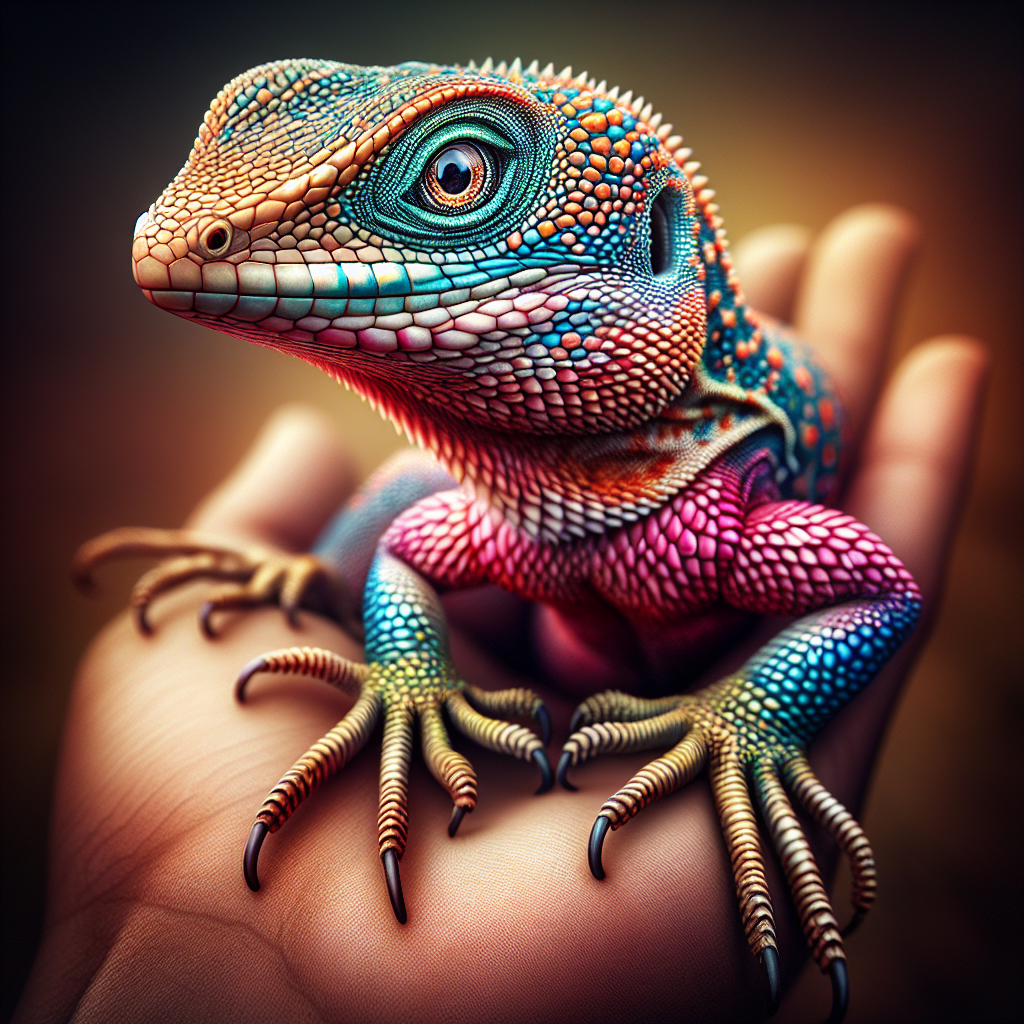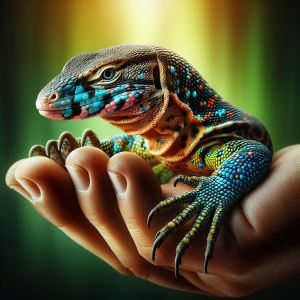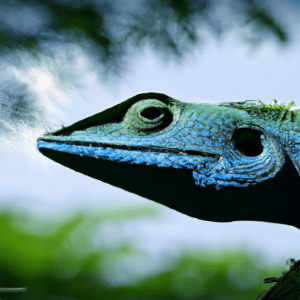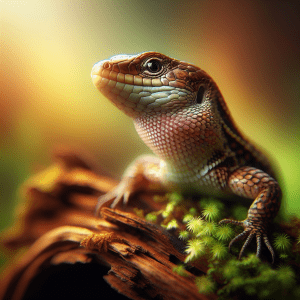Understanding Lizard Temperament
Welcome to the fascinating world of lizard temperament! Understanding your scaly friend’s behavior can be quite the adventure. Imagine this: you’re gently holding your lizard, watching its curious eyes dart around. Did you know that lizards have unique personalities just like us? Some are bold and adventurous, while others prefer a quiet, cozy spot to relax. It’s like having a miniature dragon as a companion! Now, let’s talk about a practical tip for handling your lizard with care. Always approach your lizard calmly and confidently, using slow movements to avoid startling them. Remember, trust is key in building a strong bond with your reptilian buddy. Have you ever wondered how lizards communicate with each other? They use body language, like head bobbing or tail flicking, to express their emotions. Understanding these cues can help you better respond to your lizard’s needs. So, next time your lizard gives you a little head nod, you’ll know it’s saying, “Hey, I’m feeling pretty chill today.” By honing your lizard-handling skills and connecting with your scaly companion on a deeper level, you’ll unlock a world of joy and companionship like no other. Stay tuned for more expert tips on mastering the art of lizard care!
Importance of Proper Handling Techniques
Understanding the importance of proper handling techniques when it comes to lizard temperament is crucial. It’s like mastering a delicate dance with your scaly companion. One misstep could lead to a tail flick or a quick escape!
To truly connect with your lizard, you need to approach them with care and respect. Think of it as building a friendship with a unique and fascinating creature. Remember, they have their own personalities and quirks, just like us.
One practical tip to keep in mind is to always approach your lizard calmly and confidently. They can sense fear and uncertainty, so exude a sense of calm assurance when handling them. This will help them feel more secure and at ease in your presence.
Imagine the joy of seeing your lizard trust you and willingly interact with you. It’s a rewarding experience that deepens the bond between you both. By understanding and practicing proper handling techniques, you can nurture a positive relationship with your scaly friend that will last a lifetime.
Common Behavioral Traits in Lizards
When it comes to common behavioral traits in lizards, one fascinating aspect is their unique communication methods. Lizards may not speak our language, but they have their own ways of expressing themselves. From head bobbing to tail flicking, these subtle movements can convey a wealth of information about their mood and intentions.
For instance, have you ever noticed your lizard puffing up its body or changing color? These are all forms of communication that lizards use to interact with their environment and other creatures around them. It’s like they have their own secret language that you can learn to decipher with time and observation.
Understanding these behavioral cues can help you build a stronger bond with your lizard and ensure their well-being. By paying attention to their body language and responding accordingly, you can create a harmonious and enriching relationship with your scaly friend. So next time your lizard does a little dance or gives you a friendly wave, take a moment to appreciate the intricate ways in which they communicate with you. It’s a reminder of the fascinating world of lizards and the special connection you share with your unique pet.
Tips for Safe Lizard Handling
When it comes to handling your lizard, safety should always be a top priority.
Proper technique is crucial to ensure both you and your scaly friend stay safe and comfortable.
One tip to keep in mind is to approach your lizard calmly and confidently.
Avoid sudden movements that could startle or stress them out.
Imagine yourself as a lizard whisperer, using gentle motions to communicate with your pet.
Remember, lizards are sensitive creatures and can pick up on your energy.
By establishing trust and respect through your handling techniques, you can strengthen your bond with your lizard.
Consider incorporating positive reinforcement, such as offering treats after handling sessions.
This can help your lizard associate handling with positive experiences and build a sense of security.
Ultimately, mastering the art of safe and effective lizard handling will not only benefit your pet but also deepen your connection with these fascinating creatures.
Creating a Comfortable Environment for Your Lizard
Picture this: you’re about to handle your lizard, but wait! Do you know their temperament well?
Lizards are fascinating creatures with unique behaviors that can vary depending on the species.
For instance, did you know that some lizards may prefer to be left alone while others enjoy human interaction?
Understanding your lizard’s temperament is crucial for a harmonious relationship.
Imagine trying to handle a skittish lizard without knowing the proper techniques. It could stress them out!
To ensure safe handling, start by observing your lizard’s body language and reactions.
Offering treats during handling can help build trust and strengthen your bond with your scaly friend.
Have you ever faced challenges in handling your lizard due to their temperament?
Learning how to manage and respect your lizard’s temperament will lead to a happier and healthier pet-owner relationship.
By incorporating these tips into your lizard care routine, you’ll become an expert in handling your unique reptilian companion.
Building Trust with Your Lizard
Building trust with your lizard is key to a strong bond. Imagine your lizard as a tiny dinosaur, a prehistoric companion with unique needs and behaviors. By understanding these quirks, you can create a harmonious environment. Remember, lizards are sensitive to changes in their surroundings. Share your space with them gradually, giving them time to adjust. Offer treats and gentle touches to show your lizard that you mean no harm. Patience is key when building trust with these fascinating creatures. What methods have you tried to build trust with your lizard? Have you noticed any progress? Remember, every lizard is different, so experiment with various approaches. With time and effort, you’ll develop a deep connection with your scaly friend. Trust is a two-way street, so be consistent and nurturing in your interactions. Embrace the journey of understanding your lizard’s unique temperament and watch your bond flourish.
Recognizing Signs of Stress in Lizards
Recognizing Signs of Stress in Lizards is crucial for their well-being and your peace of mind. Picture this: you come home after a long day, excited to check on your scaly companion. But wait, something seems off. Your lizard is acting differently. It’s not its usual self, and you start to worry. This is where understanding the signs of stress becomes essential. Lizards, like humans, can feel stressed and overwhelmed in certain situations. Maybe the temperature in their habitat is not right, or they are feeling threatened by something in their environment. It’s important to pay attention to subtle cues such as changes in behavior, appetite, or body language. A stressed lizard may exhibit behaviors like hiding more often, refusing to eat, or displaying aggressive tendencies. By being observant and proactive, you can address the underlying issues and create a more comfortable and stress-free environment for your scaly friend. So, the next time you notice your lizard acting out of character, take a step back, assess the situation, and make adjustments to ensure your pet is happy and healthy.
Bonding Activities for You and Your Lizard
Bonding Activities for You and Your Lizard
When it comes to strengthening your bond with your lizard, engaging in interactive activities can work wonders. Imagine this: you and your scaly friend embarking on fun adventures together, creating unforgettable memories.
One practical tip I always recommend is setting aside dedicated time for bonding activities. Whether it’s hand-feeding your lizard their favorite treats, exploring the outdoors together, or simply spending quality time in each other’s company, these interactions can significantly deepen your connection.
It’s fascinating how lizards, despite their reserved nature, can form strong bonds with their human companions. By engaging in activities that cater to their natural instincts and preferences, you can foster trust and mutual understanding.
Consider incorporating enriching experiences into your daily routine to keep your lizard stimulated and happy. From setting up an obstacle course for them to navigate to introducing new toys for mental stimulation, the possibilities are endless.
As you embark on this bonding journey, remember to observe your lizard’s cues and reactions. Building a strong connection takes time and patience, but the rewards are immeasurable.
So, what are you waiting for? Dive into the world of bonding activities with your lizard and watch as your relationship blossoms into something truly special.
Expert Advice on Managing Lizard Temperament
Have you ever wondered how to truly connect with your lizard on a deeper level? Building a strong bond with your scaly friend goes beyond just feeding and cleaning their enclosure.
One of the most effective ways to deepen your relationship with your lizard is to spend quality time together. By engaging in interactive activities such as gentle petting, offering treats, or even talking to your lizard, you can show them that you are a trustworthy and caring companion.
Lizards are intelligent creatures that can recognize their owners and respond to positive interactions. By consistently showing kindness and understanding towards your lizard, you can build a foundation of trust that will strengthen your bond over time.
Remember, every lizard is unique, so take the time to understand their individual preferences and behaviors. Pay attention to their body language and reactions to different stimuli to tailor your approach and create a positive experience for both of you.
So, the next time you spend time with your lizard, think about how you can make the interaction more meaningful and enjoyable for them. Your efforts to connect on a deeper level will not only benefit your lizard’s well-being but also enhance your own experience as a lizard owner.
Conclusion: Strengthening the Relationship with Your Lizard
Ever wondered how to handle the unique temperament of lizards? Well, you’re in the right place! Lizards are fascinating creatures with their own quirks and behaviors. Understanding their temperament is crucial for a harmonious relationship. Remember the time I tried to handle my pet lizard without knowing the proper techniques? Let’s just say it didn’t end well. This personal experience taught me the importance of learning how to handle lizards safely and effectively. Did you know that lizards have different temperaments based on their species? Some are more laid-back, while others can be quite skittish. Knowing your lizard’s behavior can help you tailor your handling approach. A practical tip for handling lizards is to approach them slowly and gently. Sudden movements can startle them, leading to stress and potential aggression. Building trust with your lizard takes time and patience. By respecting their space and handling them with care, you can foster a strong bond. Have you ever faced challenges in handling your lizard’s temperament? Share your experiences and tips in the comments below! Remember, understanding and respecting your lizard’s temperament is key to a happy and healthy relationship.




